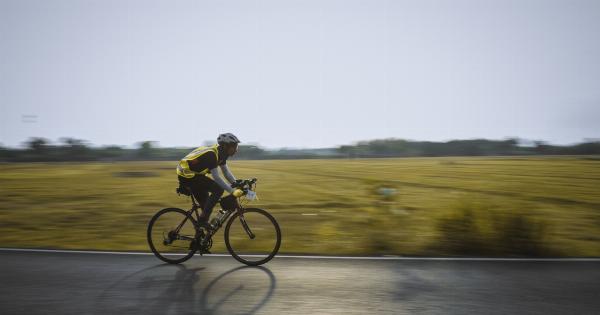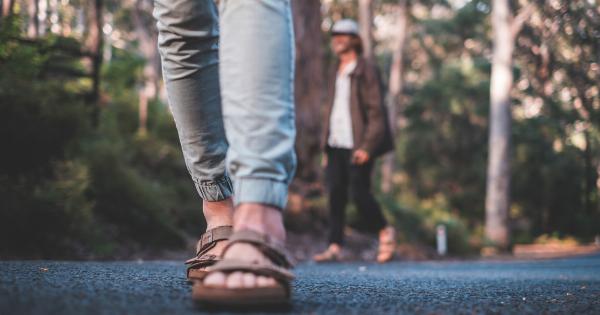Cycling is a fantastic way to stay fit and enjoy the outdoors. While many cyclists prefer riding in pleasant weather conditions, some enthusiasts take on the challenge of cycling in chilly weather.
However, cycling in cold temperatures requires proper preparation and precautions to ensure comfort and safety. In this article, we will discuss some essential tips to help you stay comfortable and safe during chilly weather cycling.
1. Dress in Layers
Wearing appropriate clothing is crucial when cycling in cold weather. Layering is the key to maintaining optimal body temperature. Start with a thin base layer made of moisture-wicking material to keep sweat away from your body.
Add an insulating middle layer, such as a fleece or thermal jacket, to trap warmth. Finally, wear an outer layer that provides protection against wind and water. Don’t forget to wear insulating gloves, a hat, and suitable footwear to keep your extremities warm.
2. Protect Your Head, Hands, and Feet
Since most body heat escapes through the head, it’s essential to protect your head during chilly weather cycling. Wear a windproof and thermal cycling cap or a helmet liner to keep your head warm.
Additionally, invest in a good pair of thermal cycling gloves to keep your hands comfortable and maintain a firm grip on the handlebars. Insulated shoe covers or thermal socks will help keep your feet warm and prevent discomfort caused by cold wind.
3. Use Eye Protection
Cycling in chilly weather often means encountering cold winds, which can dry out your eyes and impair your vision. To protect your eyes from the cold wind and potential debris, wear clear or tinted cycling glasses or goggles.
These will also help reduce eye strain caused by bright sunlight reflecting off snow or wet surfaces.
4. Ensure Proper Lighting
In colder months, daylight hours are shorter, and you may find yourself cycling during dawn, dusk, or in low-light conditions. To remain visible to other road users, it’s crucial to equip your bike with appropriate lighting.
Make sure your front and rear lights are working correctly and opt for additional reflective accessories like reflective vests or ankle bands.
5. Check Road Conditions
Before heading out for a chilly weather cycling adventure, always check the road conditions. Ice, frost, or wet leaves can make roads slippery and increase the risk of accidents.
If the roads seem unsafe, consider riding on gravel paths, bike trails, or indoor cycling alternatives like stationary bikes or indoor cycling classes.
6. Slow Down
Cycling in cold weather requires more time to react and handle your bike due to reduced traction and potential obstacles. It’s crucial to slow down and adjust your speed accordingly.
Allow extra time for braking, turning, and navigate corners with caution. By adopting a more conservative approach to your speed, you can help prevent accidents and maintain control over your bike.
7. Stay Hydrated
Although the sensation of thirst may be reduced in cold weather, it’s important to stay hydrated during chilly weather cycling. Dehydration can still occur, especially if you are perspiring or wearing excessive layers.
Make sure to drink water or isotonic beverages while cycling to replenish fluids lost through sweat.
8. Take Regular Breaks
Cycling in the cold can be physically demanding, so it’s essential to listen to your body and take regular breaks. When you stop, find sheltered spots where you can warm up, rest, and refuel.
Enjoying a hot beverage or a warm snack during breaks can help elevate your body temperature and provide a much-needed energy boost.
9. Maintain Your Bike
Chilly weather can be harsh on your bicycle. Before embarking on cold-weather cycling journeys, ensure your bike is properly maintained. Check the tire pressure, clean and lubricate the drivetrain, and make sure the brakes are in good working condition.
Regular maintenance will help prevent mechanical issues and enhance your overall cycling experience.
10. Choose Appropriate Winter Cycling Gear
Investing in high-quality winter cycling gear is essential for staying comfortable and safe during chilly weather rides.
Opt for windproof and thermal cycling jackets, pants, and bib tights that provide insulation without sacrificing freedom of movement. Consider using shoe covers or winter cycling boots to protect your feet from the cold. Accessories like neck warmers, balaclavas, and ear warmers can also help prevent heat loss from exposed areas.
Conclusion
Cycling in chilly weather can be a rewarding experience if you are properly prepared.
By dressing in layers, protecting your head, hands, and feet, using eye protection, ensuring proper lighting, checking road conditions, and adjusting your speed, you can enjoy a comfortable and safe ride. Remember to stay hydrated, take regular breaks, and maintain your bike to optimize your cycling experience. With the right gear and precautions, you can confidently pedal through the cold and embrace the joys of winter cycling.































